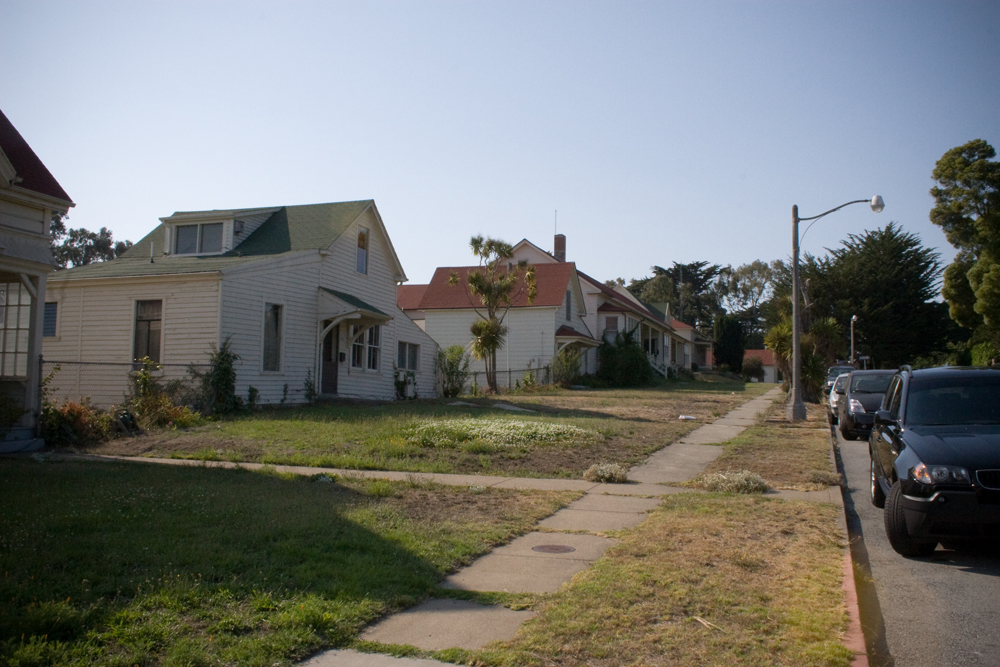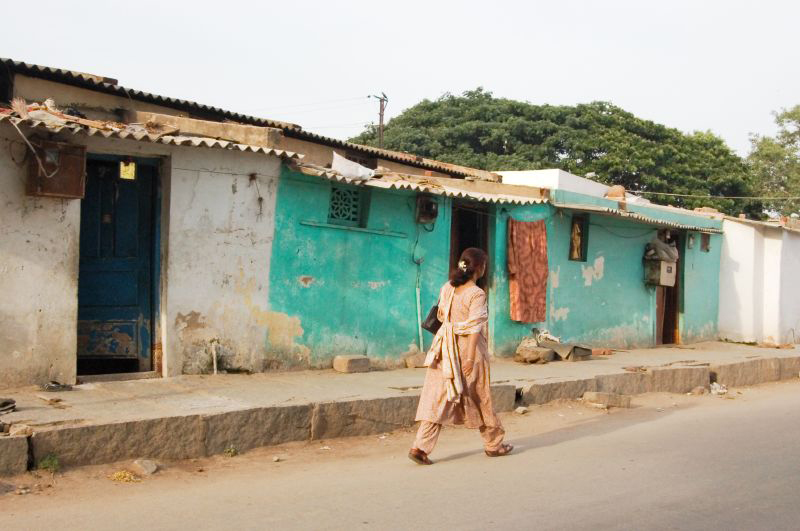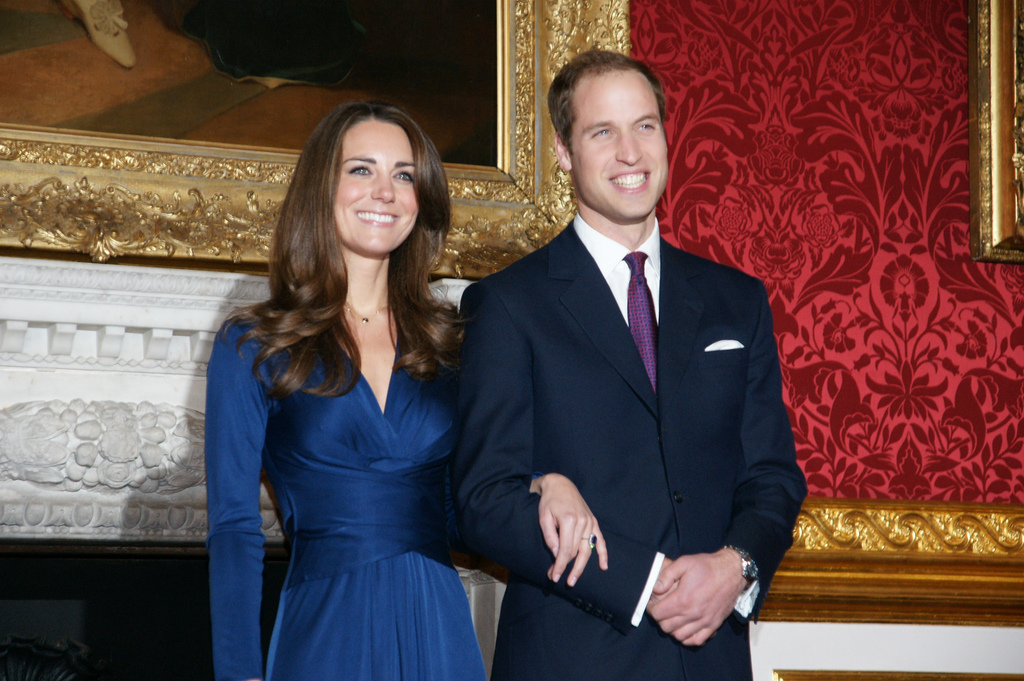38 What Is Social Stratification?
Learning Objectives
- Differentiate between open and closed stratification systems
- Distinguish between caste and class systems
- Understand meritocracy as an ideal system of stratification

Sociologists use the term social stratification to describe the system of social standing. Social stratification refers to a society’s categorization of its people into rankings of socioeconomic tiers based on factors like wealth, income, race, education, and power.
You may remember the word “stratification” from geology class. The distinct vertical layers found in rock, called stratification, are a good way to visualize social structure. Society’s layers are made of people, and society’s resources are distributed unevenly throughout the layers. The people who have more resources represent the top layer of the social structure of stratification. Other groups of people, with progressively fewer and fewer resources, represent the lower layers of our society.

In the United States, people like to believe everyone has an equal chance at success. To a certain extent, Aaron illustrates the belief that hard work and talent—not prejudicial treatment or societal values—determine social rank. This emphasis on self-effort perpetuates the belief that people control their own social standing.
However, sociologists recognize that social stratification is a society-wide system that makes inequalities apparent. While there are always inequalities between individuals, sociologists are interested in larger social patterns. Stratification is not about individual inequalities, but about systematic inequalities based on group membership, classes, and the like. No individual, rich or poor, can be blamed for social inequalities. The structure of society affects a person’s social standing. Although individuals may support or fight inequalities, social stratification is created and supported by society as a whole.

Factors that define stratification vary in different societies. In most societies, stratification is an economic system, based on wealth, the net value of money and assets a person has, and income, a person’s wages or investment dividends. While people are regularly categorized based on how rich or poor they are, other important factors influence social standing. For example, in some cultures, wisdom and charisma are valued, and people who have them are revered more than those who don’t. In some cultures, the elderly are esteemed; in others, the elderly are disparaged or overlooked. Societies’ cultural beliefs often reinforce the inequalities of stratification.
One key determinant of social standing is the social standing of our parents. Parents tend to pass their social position on to their children. People inherit not only social standing but also the cultural norms that accompany a certain lifestyle. They share these with a network of friends and family members. Social standing becomes a comfort zone, a familiar lifestyle, and an identity. This is one of the reasons first-generation college students do not fare as well as other students.
Other determinants are found in a society’s occupational structure. Teachers, for example, often have high levels of education but receive relatively low pay. Many believe that teaching is a noble profession, so teachers should do their jobs for love of their profession and the good of their students—not for money. Yet no successful executive or entrepreneur would embrace that attitude in the business world, where profits are valued as a driving force. Cultural attitudes and beliefs like these support and perpetuate social inequalities.
Recent Economic Changes and U.S. Stratification
As a result of the Great Recession that rocked our nation’s economy in the last few years, many families and individuals found themselves struggling like never before. The nation fell into a period of prolonged and exceptionally high unemployment. While no one was completely insulated from the recession, perhaps those in the lower classes felt the impact most profoundly. Before the recession, many were living paycheck to paycheck or even had been living comfortably. As the recession hit, they were often among the first to lose their jobs. Unable to find replacement employment, they faced more than loss of income. Their homes were foreclosed, their cars were repossessed, and their ability to afford healthcare was taken away. This put many in the position of deciding whether to put food on the table or fill a needed prescription.
While we’re not completely out of the woods economically, there are several signs that we’re on the road to recovery. Many of those who suffered during the recession are back to work and are busy rebuilding their lives. The Affordable Health Care Act has provided health insurance to millions who lost or never had it.
But the Great Recession, like the Great Depression, has changed social attitudes. Where once it was important to demonstrate wealth by wearing expensive clothing items like Calvin Klein shirts and Louis Vuitton shoes, now there’s a new, thriftier way of thinking. In many circles, it has become hip to be frugal. It’s no longer about how much we spend, but about how much we don’t spend. Think of shows like Extreme Couponing on TLC and songs like Macklemore’s “Thrift Shop.”
Systems of Stratification
Sociologists distinguish between two types of systems of stratification. Closed systems accommodate little change in social position. They do not allow people to shift levels and do not permit social relationships between levels. Open systems, which are based on achievement, allow movement and interaction between layers and classes. Different systems reflect, emphasize, and foster certain cultural values and shape individual beliefs. Stratification systems include class systems and caste systems, as well as meritocracy.
The Caste System

Caste systems are closed stratification systems in which people can do little or nothing to change their social standing. A caste system is one in which people are born into their social standing and will remain in it their whole lives. People are assigned occupations regardless of their talents, interests, or potential. There are virtually no opportunities to improve a person’s social position.
In the Hindu caste tradition, people were expected to work in the occupation of their caste and to enter into marriage according to their caste. Accepting this social standing was considered a moral duty. Cultural values reinforced the system. Caste systems promote beliefs in fate, destiny, and the will of a higher power, rather than promoting individual freedom as a value. A person who lived in a caste society was socialized to accept his or her social standing.
Although the caste system in India has been officially dismantled, its residual presence in Indian society is deeply embedded. In rural areas, aspects of the tradition are more likely to remain, while urban centers show less evidence of this past. In India’s larger cities, people now have more opportunities to choose their own career paths and marriage partners. As a global center of employment, corporations have introduced merit-based hiring and employment to the nation.
The Class System
A class system is based on both social factors and individual achievement. A class consists of a set of people who share similar status with regard to factors like wealth, income, education, and occupation. Unlike caste systems, class systems are open. People are free to gain a different level of education or employment than their parents. They can also socialize with and marry members of other classes, which allows people to move from one class to another.
In a class system, occupation is not fixed at birth. Though family and other societal models help guide a person toward a career, personal choice plays a role.
In class systems, people have the option to form exogamous marriages, unions of spouses from different social categories. Marriage in these circumstances is based on values such as love and compatibility rather than on social standing or economics. Though social conformities still exist that encourage people to choose partners within their own class, people are not as pressured to choose marriage partners based solely on those elements. Marriage to a partner from the same social background is an endogamous union.
Meritocracy
Meritocracy is an ideal system based on the belief that social stratification is the result of personal effort—or merit—that determines social standing. High levels of effort will lead to a high social position, and vice versa. The concept of meritocracy is an ideal—because a society has never existed where social rank was based purely on merit. Because of the complex structure of societies, processes like socialization, and the realities of economic systems, social standing is influenced by multiple factors—not merit alone. Inheritance and pressure to conform to norms, for instance, disrupt the notion of a pure meritocracy. While a meritocracy has never existed, sociologists see aspects of meritocracies in modern societies when they study the role of academic and job performance and the systems in place for evaluating and rewarding achievement in these areas.
Status Consistency
Social stratification systems determine social position based on factors like income, education, and occupation. Sociologists use the term status consistency to describe the consistency, or lack thereof, of an individual’s rank across these factors. Caste systems correlate with high status consistency, whereas the more flexible class system has lower status consistency.
To illustrate, let’s consider Susan. Susan earned her high school degree but did not go to college. That factor is a trait of the lower-middle class. She began doing landscaping work, which, as manual labor, is also a trait of lower-middle class or even lower class. However, over time, Susan started her own company. She hired employees. She won larger contracts. She became a business owner and earned a lot of money. Those traits represent the upper-middle class. There are inconsistencies between Susan’s educational level, her occupation, and her income. In a class system, a person can work hard and have little education and still be in middle or upper class, whereas in a caste system that would not be possible. In a class system, low status consistency correlates with having more choices and opportunities.

On April 29, 2011, in London, England, Prince William, Duke of Cambridge, married Catherine Middleton, a commoner. It is rare, though not unheard of, for a member of the British royal family to marry a commoner. Kate Middleton has an upper-class background, but does not have royal ancestry. Her father was a former flight dispatcher and her mother a former flight attendant and owner of Party Pieces. According to Grace Wong’s 2011 article titled, “Kate Middleton: A family business that built a princess,” “[t]he business grew to the point where [her father] quit his job . . . and it’s evolved from a mom-and-pop outfit run out of a shed . . . into a venture operated out of three converted farm buildings in Berkshire.” Kate and William met when they were both students at the University of St. Andrews in Scotland (Köhler 2010).
Britain’s monarchy arose during the Middle Ages. Its social hierarchy placed royalty at the top and commoners on the bottom. This was generally a closed system, with people born into positions of nobility. Wealth was passed from generation to generation through primogeniture, a law stating that all property would be inherited by the firstborn son. If the family had no son, the land went to the next closest male relation. Women could not inherit property, and their social standing was primarily determined through marriage.
The arrival of the Industrial Revolution changed Britain’s social structure. Commoners moved to cities, got jobs, and made better livings. Gradually, people found new opportunities to increase their wealth and power. Today, the government is a constitutional monarchy with the prime minister and other ministers elected to their positions, and with the royal family’s role being largely ceremonial. The long-ago differences between nobility and commoners have blurred, and the modern class system in Britain is similar to that of the United States (McKee 1996).
Today, the royal family still commands wealth, power, and a great deal of attention. When Queen Elizabeth II retires or passes away, Prince Charles will be first in line to ascend the throne. If he abdicates (chooses not to become king) or dies, the position will go to Prince William. If that happens, Kate Middleton will be called Queen Catherine and hold the position of queen consort. She will be one of the few queens in history to have earned a college degree (Marquand 2011).
There is a great deal of social pressure on her not only to behave as a royal but also to bear children. In fact, Kate and Prince William welcomed their first son, Prince George, on July 22, 2013 and are expecting their second child. The royal family recently changed its succession laws to allow daughters, not just sons, to ascend the throne. Kate’s experience—from commoner to potential queen—demonstrates the fluidity of social position in modern society.
Summary
Stratification systems are either closed, meaning they allow little change in social position, or open, meaning they allow movement and interaction between the layers. A caste system is one in which social standing is based on ascribed status or birth. Class systems are open, with achievement playing a role in social position. People fall into classes based on factors like wealth, income, education, and occupation. A meritocracy is a system of social stratification that confers standing based on personal worth, rewarding effort.
Section Quiz
What factor makes caste systems closed?
- They are run by secretive governments.
- People cannot change their social standings.
- Most have been outlawed.
- They exist only in rural areas.
B
What factor makes class systems open?
- They allow for movement between the classes.
- People are more open-minded.
- People are encouraged to socialize within their class.
- They do not have clearly defined layers.
A
Which of these systems allows for the most social mobility?
- Caste
- Monarchy
- Endogamy
- Class
D
Which person best illustrates opportunities for upward social mobility in the United States?
- First-shift factory worker
- First-generation college student
- Firstborn son who inherits the family business
- First-time interviewee who is hired for a job
B
Which statement illustrates low status consistency?
- A suburban family lives in a modest ranch home and enjoys a nice vacation each summer.
- A single mother receives food stamps and struggles to find adequate employment.
- A college dropout launches an online company that earns millions in its first year.
- A celebrity actress owns homes in three countries.
C
Based on meritocracy, a physician’s assistant would:
- receive the same pay as all the other physician’s assistants
- be encouraged to earn a higher degree to seek a better position
- most likely marry a professional at the same level
- earn a pay raise for doing excellent work
D
Short Answer
Track the social stratification of your family tree. Did the social standing of your parents differ from the social standing of your grandparents and great-grandparents? What social traits were handed down by your forebears? Are there any exogamous marriages in your history? Does your family exhibit status consistencies or inconsistencies?
What defines communities that have low status consistency? What are the ramifications, both positive and negative, of cultures with low status consistency? Try to think of specific examples to support your ideas.
Review the concept of stratification. Now choose a group of people you have observed and been a part of—for example, cousins, high school friends, classmates, sport teammates, or coworkers. How does the structure of the social group you chose adhere to the concept of stratification?
Further Research
The New York Times investigated social stratification in their series of articles called “Class Matters.” The online accompaniment to the series includes an interactive graphic called “How Class Works,” which tallies four factors—occupation, education, income, and wealth—and places an individual within a certain class and percentile. What class describes you? Test your class rank on the interactive site: http://openstax.org/l/NY_Times_how_class_works
References
Köhler, Nicholas. 2010. “An Uncommon Princess.” Maclean’s, November 22. Retrieved January 9, 2012 (http://www2.macleans.ca/2010/11/22/an-uncommon-princess/).
McKee, Victoria. 1996. “Blue Blood and the Color of Money.” New York Times, June 9.
Marquand, Robert. 2011. “What Kate Middleton’s Wedding to Prince William Could Do for Britain.” Christian Science Monitor, April 15. Retrieved January 9, 2012 (http://www.csmonitor.com/World/Europe/2011/0415/What-Kate-Middleton-s-wedding-to-Prince-William-could-do-for-Britain).
Wong, Grace. 2011. “Kate Middleton: A Family Business That Built a Princess.” CNN Money. Retrieved December 22, 2014 (http://money.cnn.com/2011/04/14/smallbusiness/kate-middleton-party-pieces/).
Glossary
- caste system
- a system in which people are born into a social standing that they will retain their entire lives
- class
- a group who shares a common social status based on factors like wealth, income, education, and occupation
- class system
- social standing based on social factors and individual accomplishments
- endogamous marriages
- unions of people within the same social category
- exogamous unions
- unions of spouses from different social categories
- income
- the money a person earns from work or investments
- meritocracy
- an ideal system in which personal effort—or merit—determines social standing
- primogeniture
- a law stating that all property passes to the firstborn son
- social stratification
- a socioeconomic system that divides society’s members into categories ranking from high to low, based on things like wealth, power, and prestige
- status consistency
- the consistency, or lack thereof, of an individual’s rank across social categories like income, education, and occupation
- wealth
- the value of money and assets a person has from, for example, inheritance

